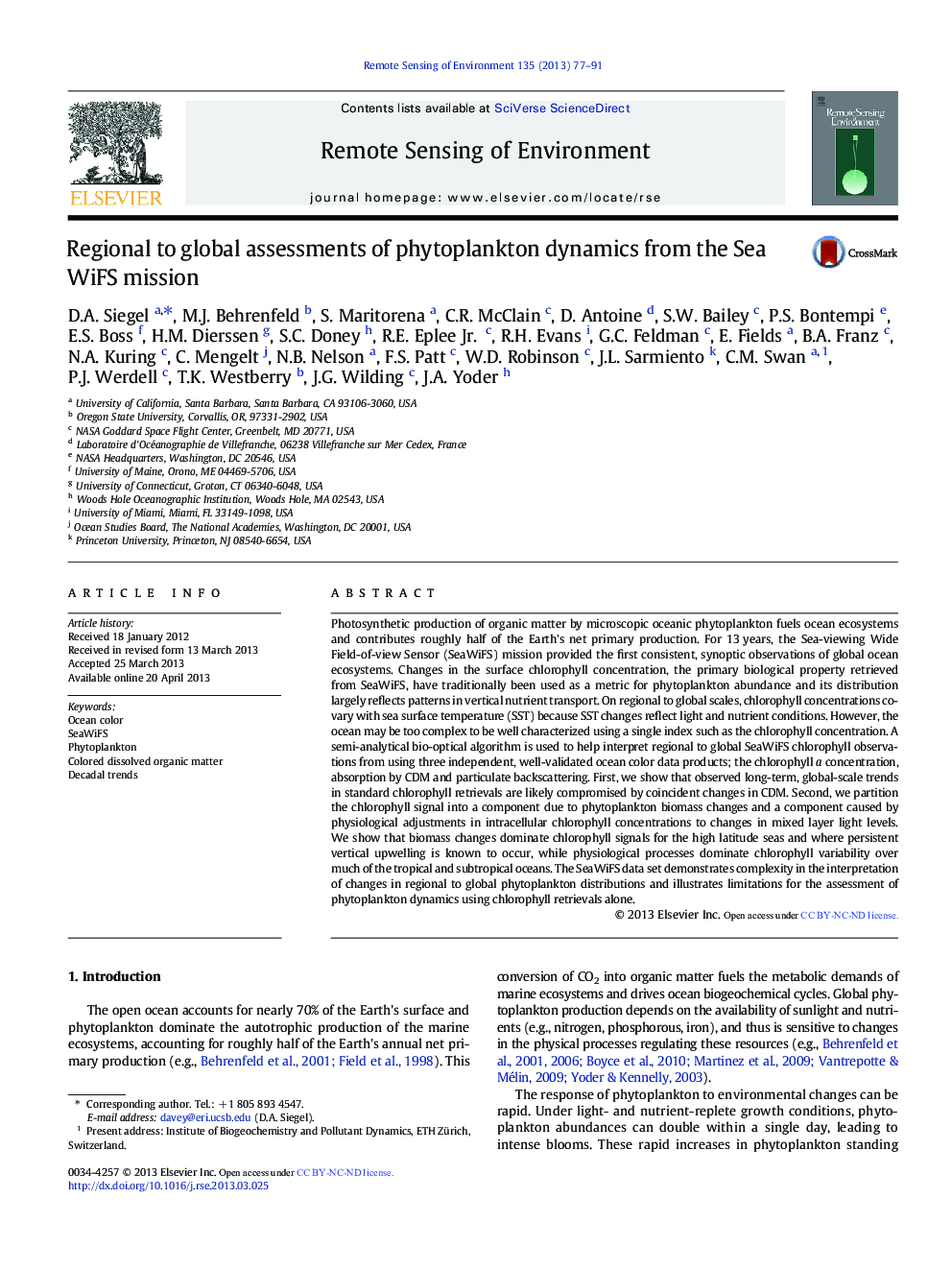| کد مقاله | کد نشریه | سال انتشار | مقاله انگلیسی | نسخه تمام متن |
|---|---|---|---|---|
| 6347296 | 1621265 | 2013 | 15 صفحه PDF | دانلود رایگان |

- Evaluation of the SeaWiFS climate data record of chlorophyll concentrations.
- Colored dissolved organic matter obfuscates the empirical retrieval of chlorophyll.
- Global trends and patterns depend on the choice of bio-optical model used.
- Chlorophyll changes reflects both phytoplankton biomass and physiological changes.
- The SeaWiFS mission laid out a blueprint for future satellite ocean color missions.
Photosynthetic production of organic matter by microscopic oceanic phytoplankton fuels ocean ecosystems and contributes roughly half of the Earth's net primary production. For 13Â years, the Sea-viewing Wide Field-of-view Sensor (SeaWiFS) mission provided the first consistent, synoptic observations of global ocean ecosystems. Changes in the surface chlorophyll concentration, the primary biological property retrieved from SeaWiFS, have traditionally been used as a metric for phytoplankton abundance and its distribution largely reflects patterns in vertical nutrient transport. On regional to global scales, chlorophyll concentrations covary with sea surface temperature (SST) because SST changes reflect light and nutrient conditions. However, the ocean may be too complex to be well characterized using a single index such as the chlorophyll concentration. A semi-analytical bio-optical algorithm is used to help interpret regional to global SeaWiFS chlorophyll observations from using three independent, well-validated ocean color data products; the chlorophyll a concentration, absorption by CDM and particulate backscattering. First, we show that observed long-term, global-scale trends in standard chlorophyll retrievals are likely compromised by coincident changes in CDM. Second, we partition the chlorophyll signal into a component due to phytoplankton biomass changes and a component caused by physiological adjustments in intracellular chlorophyll concentrations to changes in mixed layer light levels. We show that biomass changes dominate chlorophyll signals for the high latitude seas and where persistent vertical upwelling is known to occur, while physiological processes dominate chlorophyll variability over much of the tropical and subtropical oceans. The SeaWiFS data set demonstrates complexity in the interpretation of changes in regional to global phytoplankton distributions and illustrates limitations for the assessment of phytoplankton dynamics using chlorophyll retrievals alone.
Journal: Remote Sensing of Environment - Volume 135, August 2013, Pages 77-91